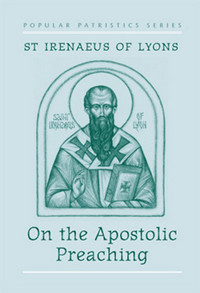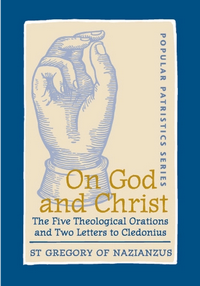 On the Apostolic Preaching
On the Apostolic Preaching
by Irenaeus of Lyons , John Behr (Translator)
DETAILS: Series: Popular Patristics Series, #17 Publisher: St Vladimir's Seminary Press Publication Date: September 01, 2003 Format: Paperback Length: 101 pgs. Read Date: April 2-9, 2023

What’s On the Apostolic Preaching About?
This is one of the two surviving works we have from the Second-Century theologian, Irenaeus. In this work, he simply recounts the Biblical storyline about the promised and coming and then Incarnate Messiah, His Earthly ministry, death, resurrection, and the spread of the Gospel.
I’m really not sure what else to say—he basically summarizes the Scriptures with a focus on Jesus.
Readability
I said essentially the same thing with the last book in this series that I blogged about, but I think it bears repeating.
For just about every reader (at least we non-scholars) the idea of reading Patristics is fairly daunting—even if you’ve done it before and emerged relatively unscathed (and maybe even learned something or enjoyed it). And it probably shouldn’t be that daunting on the whole (am more than sure that there are plenty of examples of intimidating texts).
There’s a reason that this work has endured through the centuries—it’s not just for its historical significance (although I’m sure that’s a lot of it), but this is something that has benefitted believers through the years from all levels of education and experience. There’s no one who can’t read and learn from this.
So, what did I think about On the Apostolic Preaching?
I started off a little annoyed by one of the introductory essays that stated that the first reading
will probably result in surprise and perhaps disappointment. Irenaeus does not present Christianity, in the way we have come to think of it, as a system of theological beliefs. Moreover, very little place is given to the ecclesiastical or sacramental dimensions of Christianity, nor does he describe the mystical life of prayer.
One, I didn’t know what to expect from this—I really only knew “Irenaeus” and “Popular Patristics” when I bought and then opened the book. Secondly, when I discovered what it was, I wasn’t disappointed. This is exactly what I want to see out of a 2nd Century writer—because it’s the kind of thing I appreciate in a 21st Century Writer. It’s reassuring to see that the central idea of what Apostolic Preaching ought to be is pretty much the same for both eras—yeah, some of what Irenaeus wrote could use some fine-tuning (and he’d likely say the same of what shows up in one of the Essential Studies in Biblical Theology volumes I’ve discussed). But their modus operandi are so similar, that it’s clear that they’re walking in the same direction.
I found this to be a quick, approachable read—as relatable today as it had to have been centuries ago (although I guess it’d be safe to say that many of his readers might not be ready to hear what he said in the same way I was). I was very encouraged by this and wish I’d read it years ago so I could be on my fifth or sixth reading now.
Highly recommended.

This post contains an affiliate link. If you purchase from it, I will get a small commission at no additional cost to you. As always, the opinions expressed are my own.
![]()


